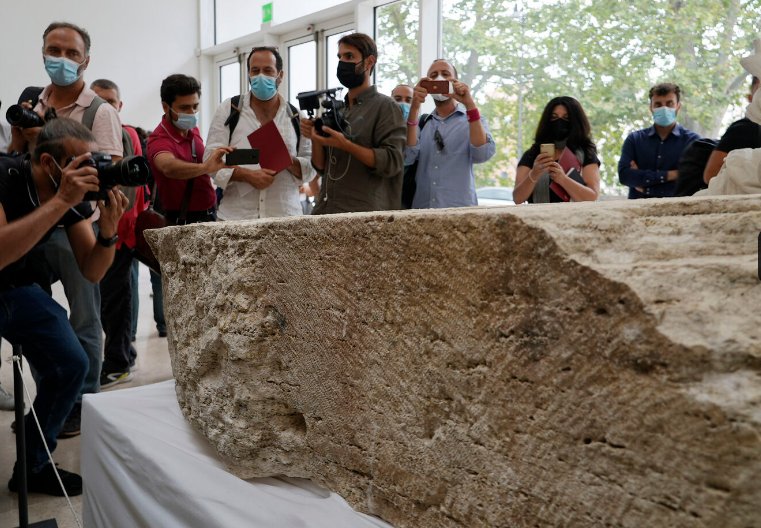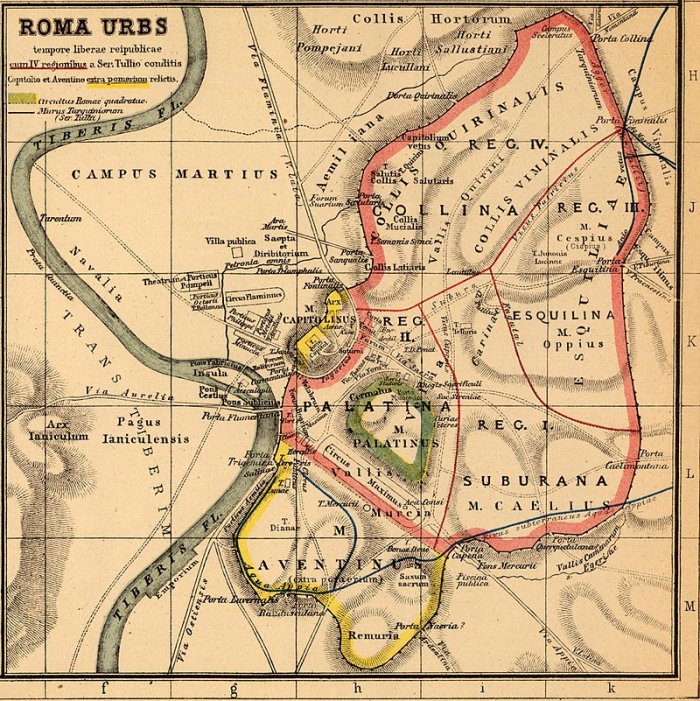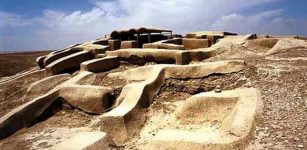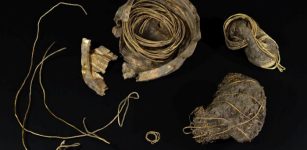Rare Stone Showing Ancient Rome’s City Limits – Accidentally Found
Conny Waters - AncientPages.com - A rare stone showing the limits of the ancient city of Rome, was accidentally found in Rome.
The stone is dated to the age of Emperor Claudius in 49 AD, and as Rome Mayor Virginia Raggi explained the pomerial stone, a huge slab of travertine that was used as a sacred, military, and political perimeter marking the edge of the city proper with Rome's outer territory.
 Photographers take pictures during the presentation to the press of an archeological finding that emerged during the excavations at a Mausoleum in Rome, Friday, July 16, 2021. (Domenico Stinellis AP Photo)
Photographers take pictures during the presentation to the press of an archeological finding that emerged during the excavations at a Mausoleum in Rome, Friday, July 16, 2021. (Domenico Stinellis AP Photo)
The discovery was made during excavations for a rerouted sewer under the recently restored mausoleum of Emperor Augustus, right off the central Via del Corso in Rome's historic center, reports AP.
In ancient Rome, the area of the pomerium was a consecrated piece of land along the city walls, where it was forbidden to farm, live or build and through which it was forbidden to enter with weapons.
At a press conference in the Ara Pacis museum near the mausoleum, Claudio Parisi Presicce, director of the Archaeological Museums of Rome, said the stone had both civic and symbolic meaning.
"The founding act of the city of Rome starts from the realization of this 'pomerium,''' he said of the consecrated area. The stone features an inscription that allowed archaeologists to date it to Claudius and the expansion of the pomerium in 49 A.D., which established Rome's new city limits.
 Inscription marking the Claudian pomerium in via del Pellegrino. Image credit: - CC BY 2.0
Inscription marking the Claudian pomerium in via del Pellegrino. Image credit: - CC BY 2.0
Interestingly only ten other stones of this kind had been discovered in Rome, the last one 100 years ago, Raggi informed. The stone will be on display at the Ara Pacis museum, the Richard Meier-designed home of a 1st-century altar until the Augustus museum opens.
The pomerium (in Latin, "behind/beyond the wall") was a religious boundary around the city of Rome
and cities controlled by Rome, which existed only within its pomerium; everything beyond it was simply territory belonging to Rome.
 Map of Rome in the time of Augustus. The pomerium at that time is marked in pink; the Capitoline and Aventine are extra pomerium, "beyond the wall", with their boundaries in yellow. Image credit: - Public Domain
Map of Rome in the time of Augustus. The pomerium at that time is marked in pink; the Capitoline and Aventine are extra pomerium, "beyond the wall", with their boundaries in yellow. Image credit: - Public Domain
According to the Roman historian, Livy the pomerium was originally an area of ground on both sides of city walls. He states that it was an Etruscan tradition to consecrate this area by augury and that it was technically unlawful to inhabit or to farm the area of the pomerium, which in part had the purpose of preventing buildings from being erected close to the wall.
According to legend, Romulus in 753 BC ploughed a furrow on the western tip of the Palatine, thus he defined the boundaries of the city (Roma quadrata).
See also: More Archaeology News
Pomerium also meant the inner area of the city. The line of Pomerium was dedicated to the deities of the underworld. It was forbidden and threatened with death due to ritual blemishes. During the demarcation of the border, the plow was lifted many times, leaving the land unplowed.
Gates were built in these places. Later, the line of the Pomerium was marked with stone pillars and along it, there were built defensive walls and ramparts.
However, in Livy's time houses were in fact, built against the wall on the line.
Written by Conny Waters - AncientPages.com Staff Writer




















